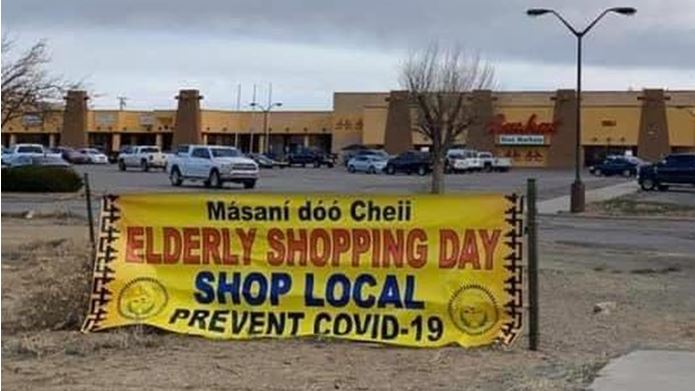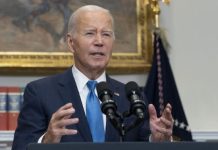
April 23 (UPI) — The Navajo Nation has extended a shelter-in-place order until mid-May to try to slow the spread of the COVID-19 virus, which has swept through the reservation.
The reservation remains a hot spot for the pandemic, measuring 10 times the number of confirmed cases per capita as the state of Arizona, according to state’s health department figures.
As of Monday, the reservation, which encompasses 27,000 square miles across Arizona, New Mexico and Utah, tallied 45 deaths and 1,321 confirmed cases — an increase of 124 cases since Saturday.
Navajo Nation President Jonathan Nez announced Tuesday that a shelter-in-place executive order would be extended until May 17, when some health officials predict the virus will peak.
Residents have been asked not to leave home except to work at jobs considered essential services or to buy groceries or gas.
A weekend curfew also has been extended for another three weeks, Nez said Tuesday.
“There appears to be a flattening of the Navajo Nation epicurve, and we have to not let that down,” Nez said in a live video town hall address. “We have to have our Navajo Nation people continue to stay home.”
At least 15 public safety personnel have tested positive with the virus, said Jared Touchin, the Navajo Nation’s executive branch director of communications.
A non-profit foundation set up by the tribal government received $500,000 within 24-hours, Nez said Tuesday. The foundation delivers personal protective equipment to hospitals, as well as groceries, drinking water, firewood and livestock feed to residents. Other non-profits are helping on the reservation, too.
Nez said Monday during a state of the union address that the fund had received donations from celebrities Mark Ruffalo and Paul Rudd. He said he also received a call from New York Gov. Andrew Cuomo, who offered to help with supplies.
Meanwhile, about 40 Abbott Laboratories ID rapid-response testing machines have been distributed to Indian Health Service locations across the reservation, a report from the health service said Monday.
Precisely why the reservation is a hotbed for the virus is not clear.
“We don’t know why there are so many cases here,” said Duane Beyal, editor of the Window Rock, Ariz.,-based, Navajo Times.
The large number could be because of widespread testing, with almost 6,000 tests administered, Beyal said. Or the virus could be taking advantage of the underlying poor health conditions like diabetes, heart disease, asthma and cancer of reservation residents.
“The other theory is the cultural aspect of how the Navajos live their lives each day, shaking hands, being communal and talking to each other,” Beyal said. “Those are no-nos now. All of that is a recipe for disaster.”
With population spread in rural areas, Internet service on the reservation is patchy, which can be dangerous during a pandemic, officials said.
On Friday, the U.S. Federal Communications Commission expanded broadband on the reservation by granting temporary access and use to an unassigned radio spectrum.
“Everyone has a little phone, and they use those to click onto the Internet,” Beyal said. Online readership of the newspaper has never been higher, he said. “[Expanded Internet access] really comes in handy.”
Navajo Nation members got a glimpse of what the virus is like when a tribal member posted his own recovery video on social media.
“It was just pure pain,” said Lewis Joe, a resident of Kayenta, Ariz., a virus hot spot. ” It happened fast, but it wasn’t quick. It was about the worst four days of my life.
“I’ve got kicked and I’ve been bucked off a horse and run over by horse and by cattle. The pain of feeling that is nothing compared to what I went through with COVID-19,” he said.
Meanwhile the Navajo Department of Health has required that masks be worn in public and that grocery store and other retail employees also wear masks.
“Let’s keep working together and praying together,” Myron Lizer, the tribal vice president, said in a statement Tuesday. “Through combined efforts and through our faith, the Navajo people will beat the virus eventually, but it’s been a challenging road so far.”





